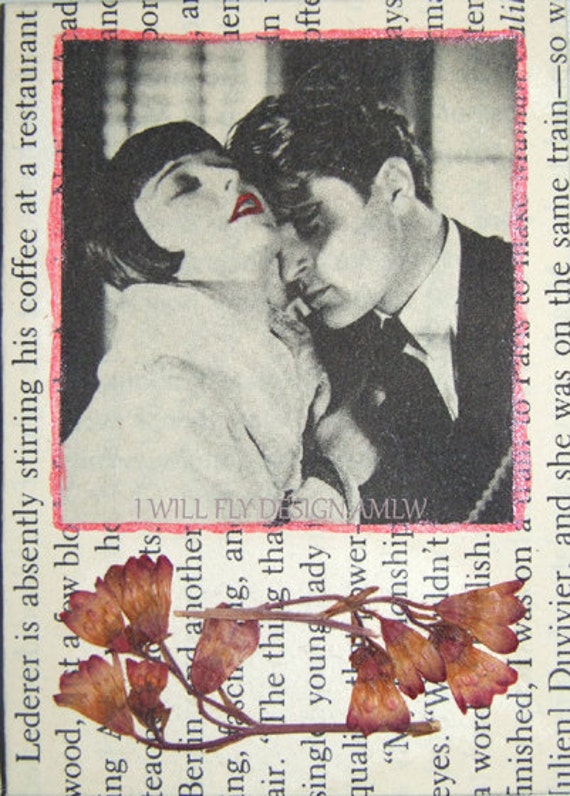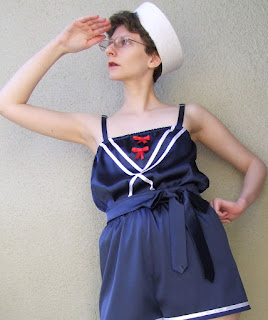Anyhow. It all started when I purchased this lovely Biedermeier-style porcelain doll head a few years ago.
You see, in the mid 1800's, a porcelain doll factory in Germany was cranking these puppies out for the toy market. This particular head was fired and glazed before being discarded because it was imperfect (she has some charming little speckles and smudges on her face and hair). Fast forward a hundred and fifty years or so, and the discard yard was excavated, uncovering all of these lovely damaged dolls and doll parts.
I was interested in making a doll like this but the head needed to be just right for the project. My major requirement was that it must have a full neck and part of the chest plate in tact so that it could be properly anchored to a cloth body. Originally, these doll heads were made with a solid chest plate drilled with little holes in the corners so they could be sewn in place on the body without too much hassle. Most of the heads I could find (and I specifically wanted one of these unpainted and "imperfect" doll heads. It would have been so much easier to find a complete "perfect" one!) were missing most or all of their necks and chest plates. This one was just right! As soon as I got her I was completely in love with her, imperfections and all.
An original doll of the era would have a body something like this:
I knew I wanted to keep the entire project in shades of white, to match the minimalist unpainted face of the doll head. Ghostly, I suppose. So, I made her body entirely from scratch out of bleached cotton muslin, which was then painted in white textile paint. I didn't have a pattern or template to work with, so the entire thing was built up through trial and error.
Trying on body parts:
Deciding on a waistline (that weird ruffly business was removed later):
Rejected feet:
Painting the body and feet/boots:
And then there were the clothes! I wanted her to wear an accurate 1850s dress and underthings, a fashionable lady with the very finest day dress. This period has never really been my favorite decade for historical fashion, though (let's face it, crinoline "hoop" skirts are just kind of ponderous and awkward) so I had to do some research before getting started. Here are a few of the extant gowns that inspired me.
I was especially fond of this one, with it's pleated bodice and pagoda sleeves (which were VERY popular at at the time), worn over engageantes (removable poofy undersleeves, almost always in lightweight white fabric like lawn or lace):
Here are a few more:
My standard method of dressing dolls is to make it up as I go along, and this one was no different. There were definitely details, here, that I didn't know about until I got to them. I built her costume up layer by layer, starting with her bloomers and boots, then adding a petticoat and undersleeves, and finally draping the skirt and bodice and adding trim as I went along.
After making the bloomers out of silk satin I decided that I wanted to do the entire outfit (except the petticoat) in silk, as well. Because I am a perfectionist, and that is all I could see in my mind, now.
Fiddling around with ideas for the bodice in muslin:
Finishing up the bloomers and boots:
Adding layers one at a time:
And now she's finished!
Here is an extant doll of the same Beidermeier period:
And here is the Lady in White (who is, I don't mind saying, about a thousand times cooler than the originals ever were. I find a certain delicious quality in the fact that this discarded "imperfect" girl is now considerably more magnificent than she would have been if she had passed muster back in 1855):
Here is a link to her item page on Etsy: linky linky link!



























